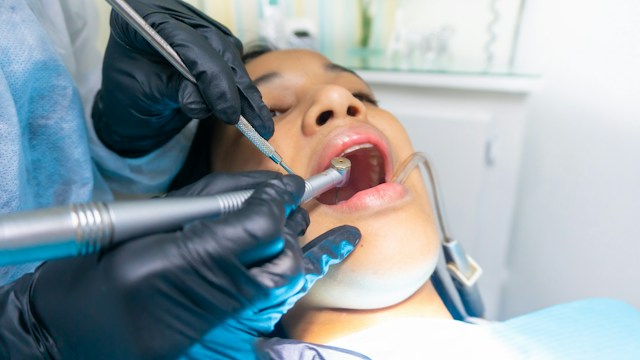Why Do I have to Wait to Get my Bottom Braces
Embarking on the journey to a straighter smile with braces is an exciting decision, but for many, the anticipation is often accompanied by a question: Why is there a waiting period before getting bottom braces? This curiosity is entirely natural, and understanding the reasons behind the delay is crucial for a successful orthodontic journey.
In this article, we’ll delve into the intricacies of the orthodontic process, exploring why patience is not just a virtue but a vital aspect of achieving the best results when aligning your bottom teeth. Join us as we demystify the waiting period and shed light on its significance in pursuing a healthier, more aligned smile.
Understanding the Orthodontic Process
Embarking to achieve a beautifully aligned smile involves a comprehensive orthodontic process. Before delving into why there’s a waiting period for bottom braces, it’s essential to grasp the overall sequence of events in orthodontic treatment.
- Initial Consultation: A detailed assessment of your dental condition occurs during the initial consultation with your orthodontist. This involves examining the alignment of your teeth, assessing any bite issues, and discussing your treatment goals. This step is pivotal in crafting a personalized plan tailored to your needs.
- Treatment Planning: Following the assessment, your orthodontist develops a customized treatment plan. This plan outlines the steps needed to achieve the desired alignment, and it may include the use of braces, retainers, or other orthodontic devices. The plan is a roadmap for the entire treatment journey.
- Preparation for Braces: Before braces can be applied to your bottom teeth, certain preparations are necessary. This may involve dental cleanings to ensure a healthy oral environment. Additionally, any required dental work, such as extractions or pre-existing dental issues, is addressed during this phase.
- Personalized Approach: It’s crucial to understand that orthodontic treatment is not a one-size-fits-all process. Each person’s case is unique, and the treatment plan is tailored to address specific concerns. This personalized approach enhances the effectiveness of the treatment, ensuring optimal results.
- Patient Education: Throughout the process, orthodontists provide thorough education to patients. This includes guidance on proper oral care with braces, dietary adjustments, and what to expect during and after the treatment. Patient cooperation and understanding play a significant role in achieving successful outcomes.
- Setting Realistic Expectations: Understanding that orthodontic treatment takes time is essential. The gradual nature of the process allows teeth to shift in a controlled and healthy manner, reducing the risk of complications. Patience becomes a valuable virtue as individuals journey toward a beautifully aligned smile.
Assessment and Planning
The initial stages of orthodontic treatment involve a meticulous assessment and planning process, crucial for crafting a practical and personalized roadmap towards achieving a beautifully aligned smile.
- Comprehensive Evaluation: The journey begins with a thorough evaluation during the initial consultation with your orthodontist. This involves thoroughly examining your dental structure, bite alignment, and oral health. Through this assessment, the orthodontist deeply understands your unique dental needs.
- Diagnostic Tools: Advanced diagnostic tools, such as X-rays and 3D imaging, may be employed to gather detailed information about the positioning of your teeth and the underlying bone structure. These tools aid in creating a precise and accurate assessment, serving as a foundation for the subsequent planning stages.
- Treatment Options Discussion: Based on the assessment, your orthodontist discusses suitable treatment options. Whether traditional braces, clear aligners, or other orthodontic appliances are recommended, this stage involves a collaborative decision-making process between you and your orthodontic team.
- Tailoring the Treatment Plan: Your orthodontist then tailors a comprehensive treatment plan that addresses your specific orthodontic concerns. This plan outlines the step-by-step approach to achieve the desired results, considering factors like the severity of misalignment, potential bite issues, and any pre-existing dental conditions.
- Timeline and Milestones: The treatment plan includes a projected timeline with key milestones. This allows you to understand the expected duration of the orthodontic journey and the stages at which adjustments or assessments will occur. Clarity about the process helps manage expectations and ensures active patient involvement.
- Financial Considerations: During the planning phase, the economic aspects of the treatment are also discussed. This includes an overview of the overall cost, available payment options, and any insurance coverage. Transparency in financial discussions ensures that individuals can make informed decisions about their orthodontic investments.
- Patient Consent and Engagement: Before commencing the treatment plan, your orthodontist ensures you fully understand the proposed approach. Patient consent is obtained, and any questions or concerns are addressed. Engaging patients in the planning process fosters a sense of ownership and commitment to the treatment journey.
- Adjustments and Flexibility: Recognizing that individual responses to treatment can vary, the plan may be adjusted as needed. Flexibility in the approach allows for modifications based on how your teeth respond to the orthodontic intervention, ensuring optimal outcomes.
Preparing for Treatment
Before applying bottom braces, a crucial phase involves thorough preparation to ensure a seamless and effective orthodontic treatment journey. This preparation encompasses various aspects to optimize oral health and set the stage for successful alignment.
1. Pre-Treatment Dental Examination:
The process begins with a comprehensive dental examination to assess the overall health of your teeth and gums. This examination identifies any pre-existing conditions that may require attention before applying braces.
2. Dental Cleanings and Health Optimization:
Professional dental cleanings are often recommended to eliminate plaque and tartar, creating a clean and healthy environment for the braces. Addressing any existing dental issues, such as cavities or gum disease, is essential during this phase.
3. Extractions and Pre-Braces Procedures:
Extractions or other dental procedures may be performed before braces are applied. This ensures adequate space for the teeth to move into their desired positions without overcrowding or misalignment.
4. Impressions and Molds:
Precision is key in orthodontic treatment. During the preparation phase, impressions or molds of your teeth may be taken. These serve as the foundation for creating customized braces that perfectly fit the contours of your mouth.
Waiting Period Reasons
The waiting period before getting bottom braces is a strategic and essential phase in the orthodontic process. Several reasons contribute to this delay, each playing a crucial role in ensuring the success and effectiveness of the treatment. Here are the key reasons behind the waiting period:
- Completion of Preparatory Dental Work: Any necessary preparatory dental work must be completed before braces can be applied to the bottom teeth. This may include dental cleanings, addressing cavities, and, in some cases, extractions. The waiting period allows sufficient time for these procedures to be performed, ensuring a healthy foundation for the orthodontic treatment.
- Optimizing Oral Health: A paramount consideration in orthodontic care is the overall oral health of the patient. The waiting period allows individuals to focus on maintaining optimal oral hygiene, addressing any existing issues, and cultivating habits that will support a healthy mouth throughout the braces-wearing period.
- Healing Time for Dental Procedures: The waiting period allows for proper healing if extractions or other dental procedures are part of the preparatory phase. This is crucial to ensure that the teeth and surrounding tissues have adequate time to recover before the braces are applied, minimizing the risk of complications during treatment.
- Customization of Orthodontic Appliances: During the waiting period, orthodontic professionals use the data gathered from assessments, molds, and imaging to customize braces specifically for each patient. This ensures a precise fit and optimal effectiveness in addressing the unique alignment needs of the individual.
- Evaluation of Treatment Readiness: The waiting period allows orthodontists to reevaluate the patient’s readiness for treatment. This includes assessing any changes in oral health, confirming that preparatory work is completed, and ensuring that the patient is mentally prepared for wearing braces.
Conclusion
In pursuing a straighter and healthier smile, the waiting period before getting bottom braces emerges as a pivotal phase in the orthodontic journey. This period, often viewed as a delay, is, in fact, a strategic and necessary interval that contributes significantly to the success and effectiveness of the overall treatment.
As we’ve explored, the waiting period allows for the completion of essential preparatory dental work, ensuring that the foundation for orthodontic treatment is solid and conducive to positive outcomes. It grants time for healing after any necessary dental procedures, minimizing the risk of complications and optimizing the conditions for successful braces application.
Moreover, this waiting period serves as an opportunity to customize orthodontic appliances. The precision in crafting braces tailored to the unique needs of each individual is a crucial aspect of achieving the desired alignment and ensuring maximum effectiveness throughout the treatment.


















